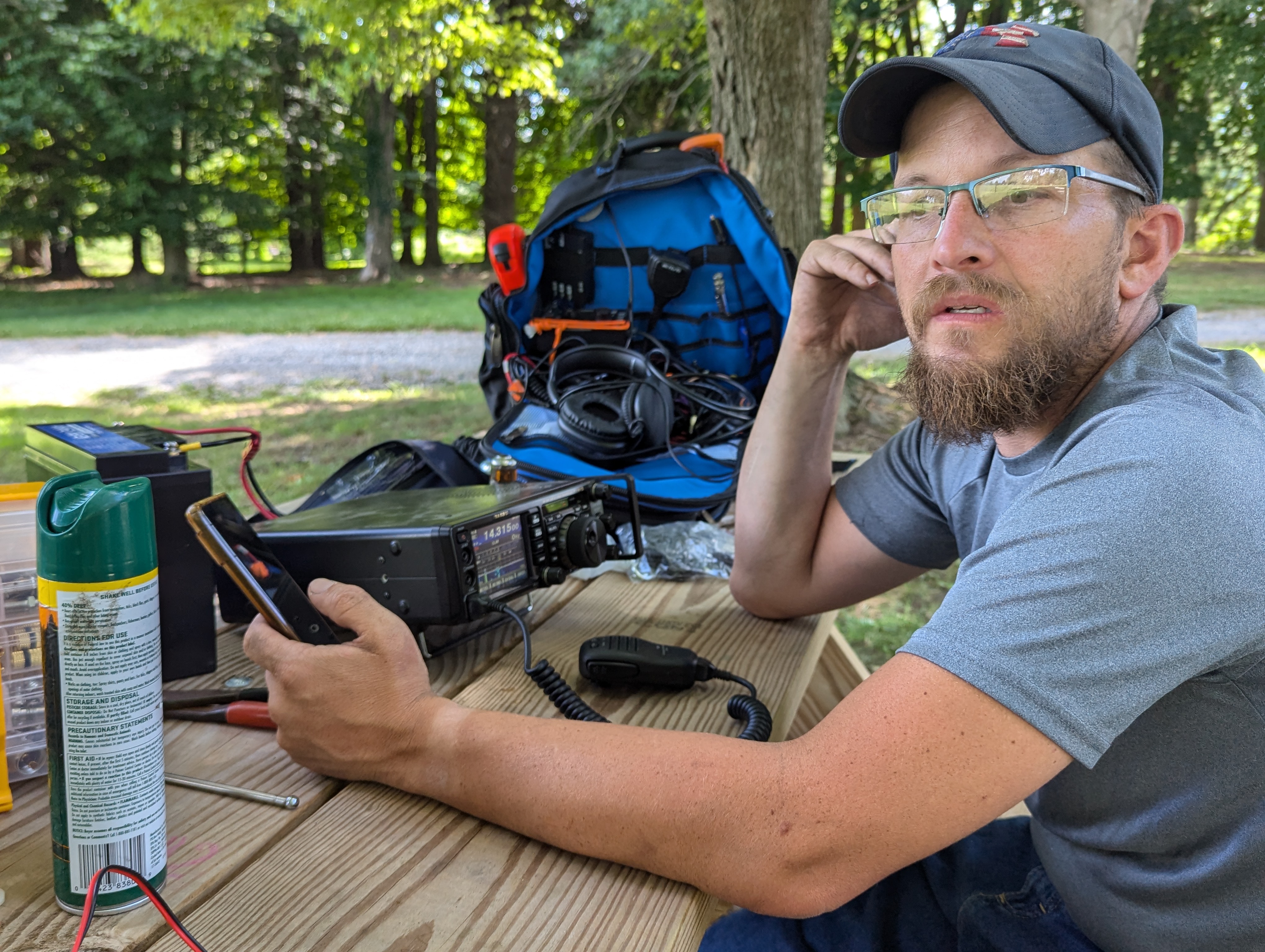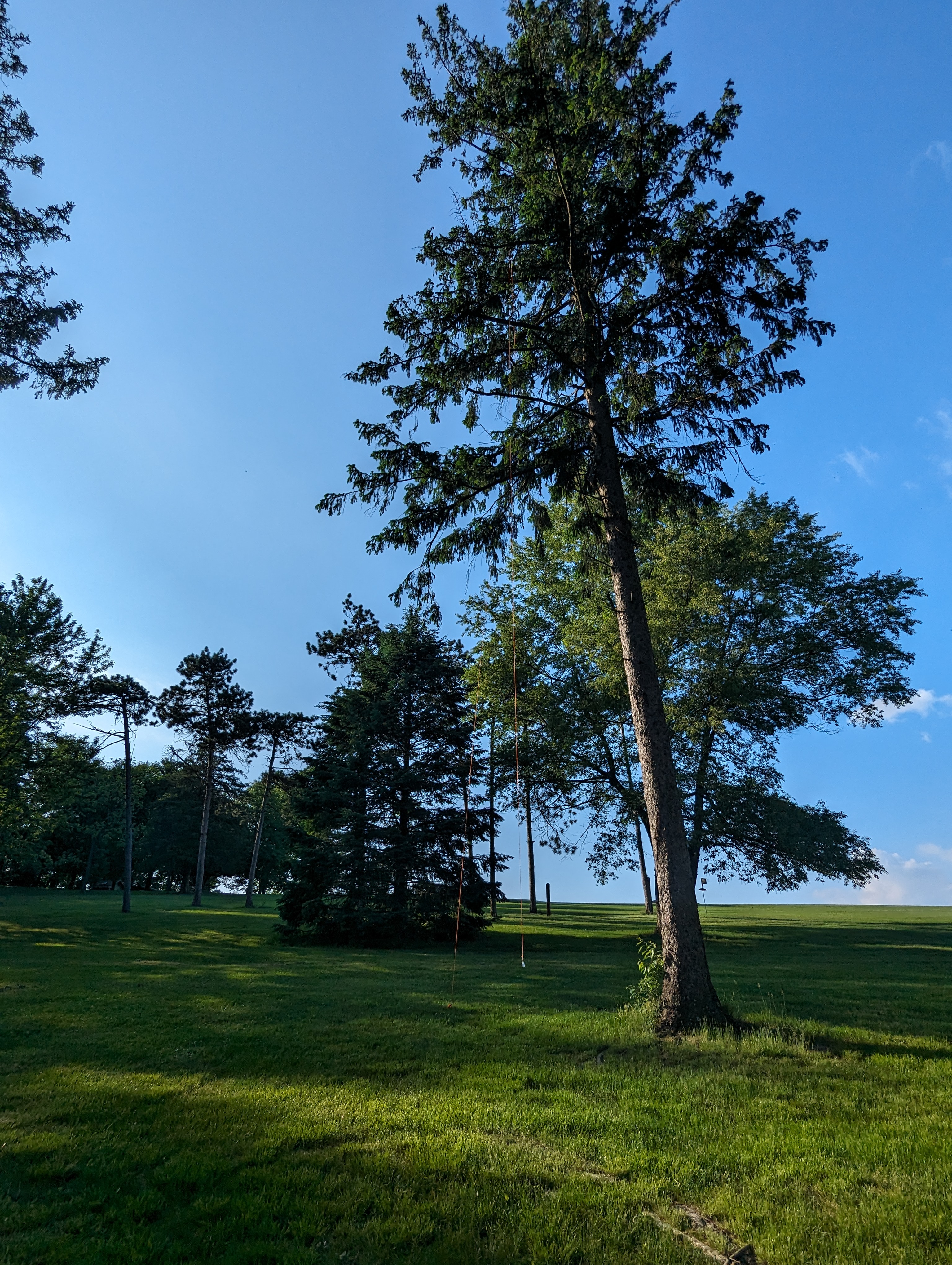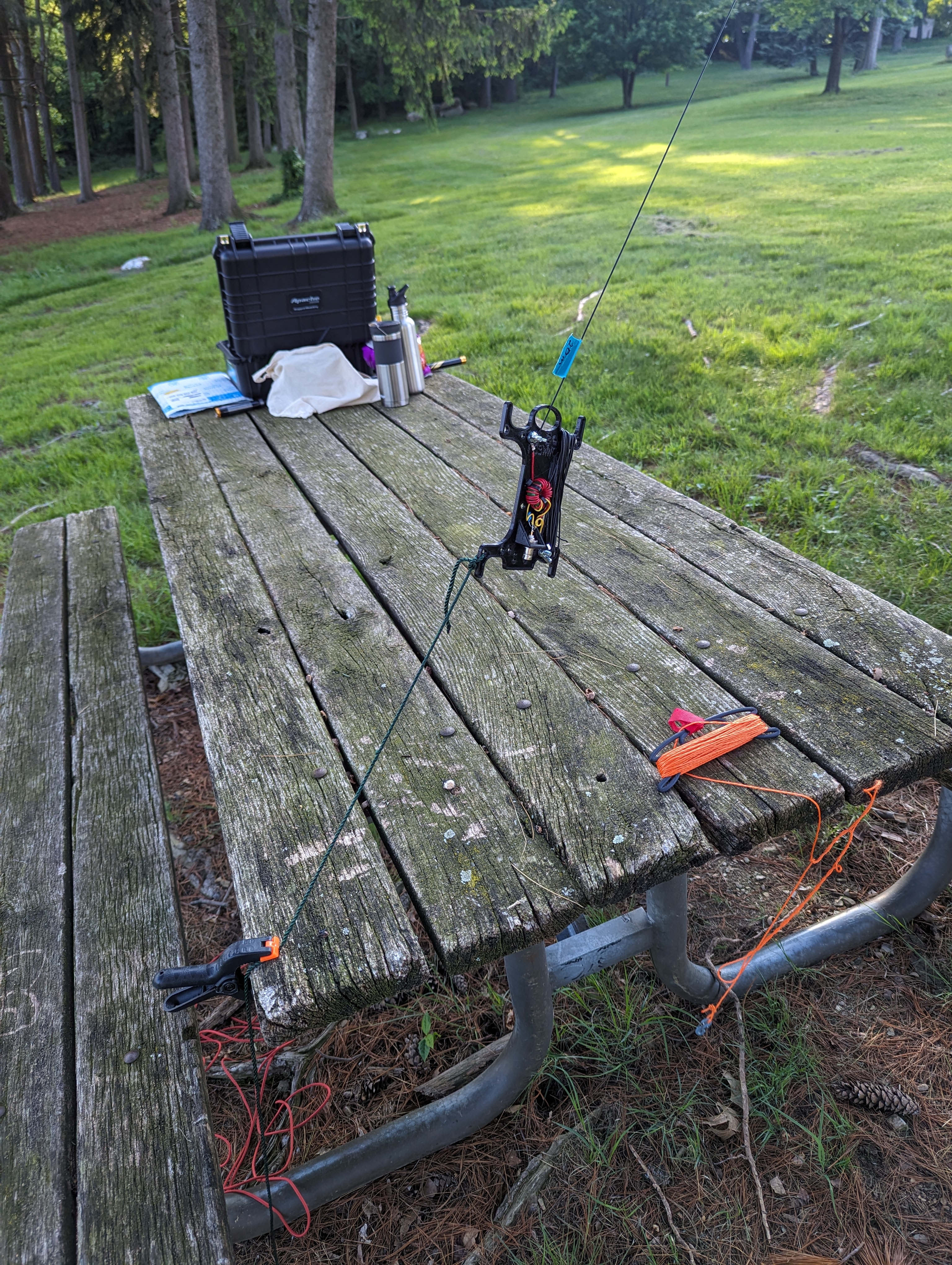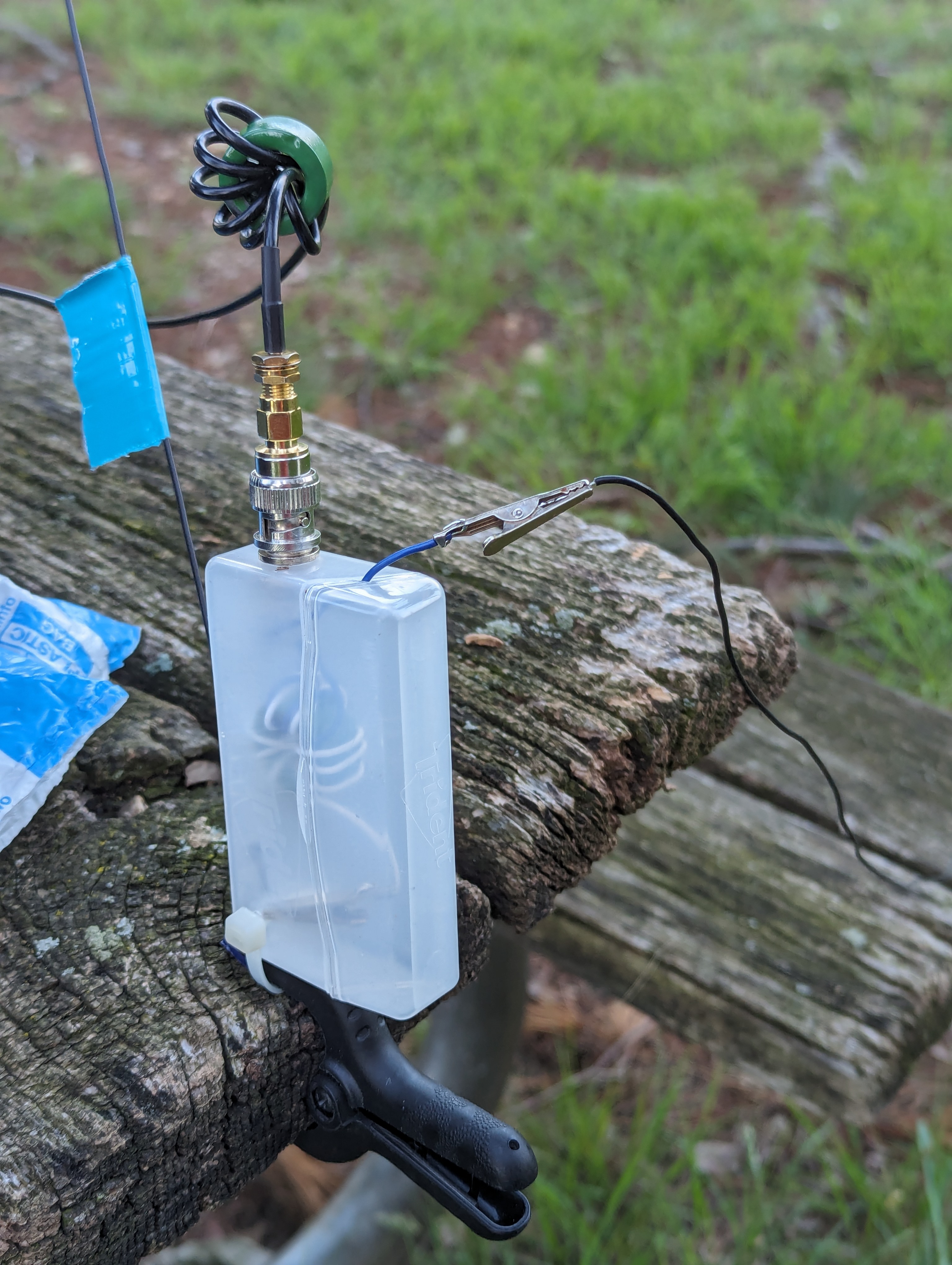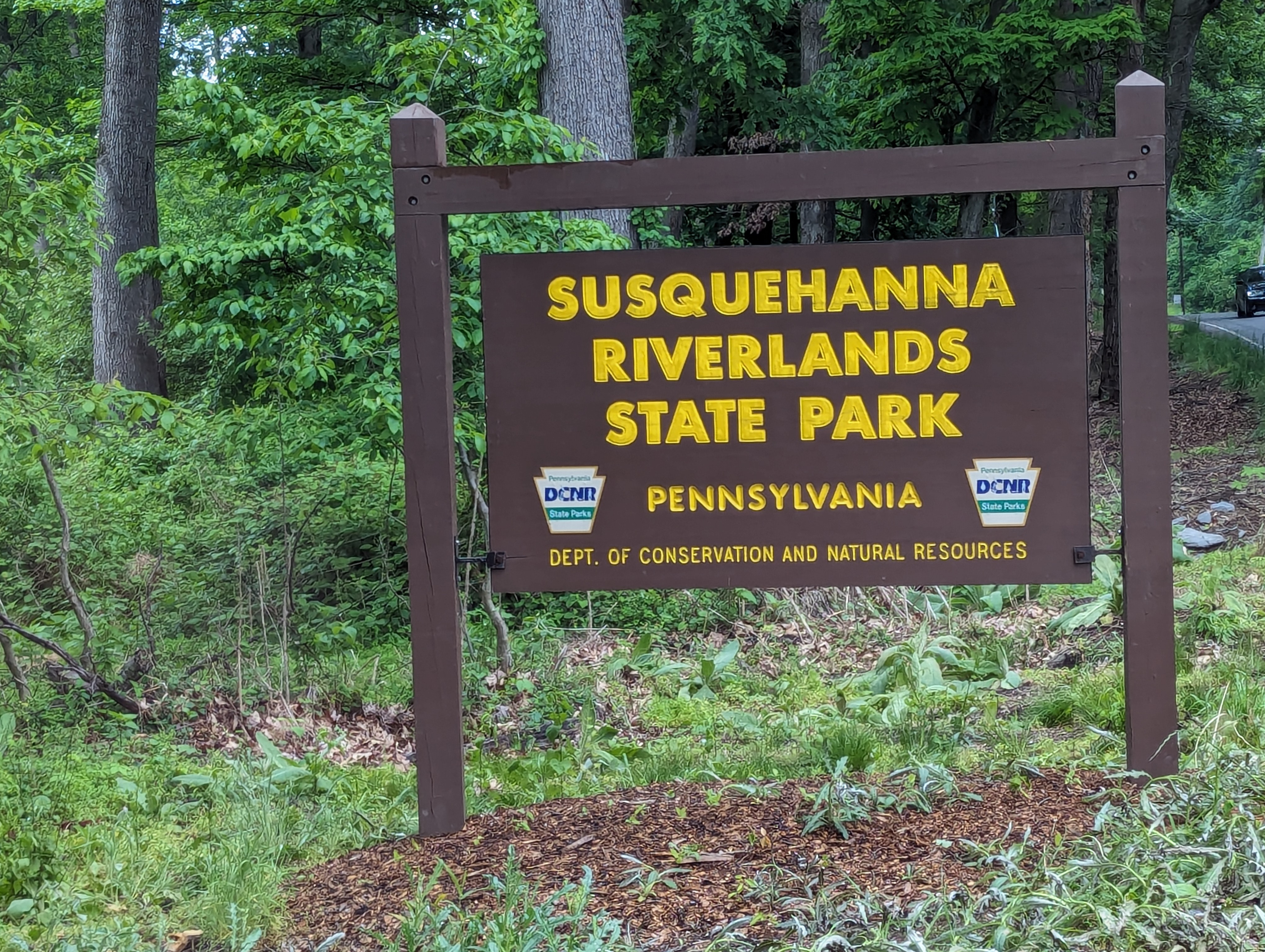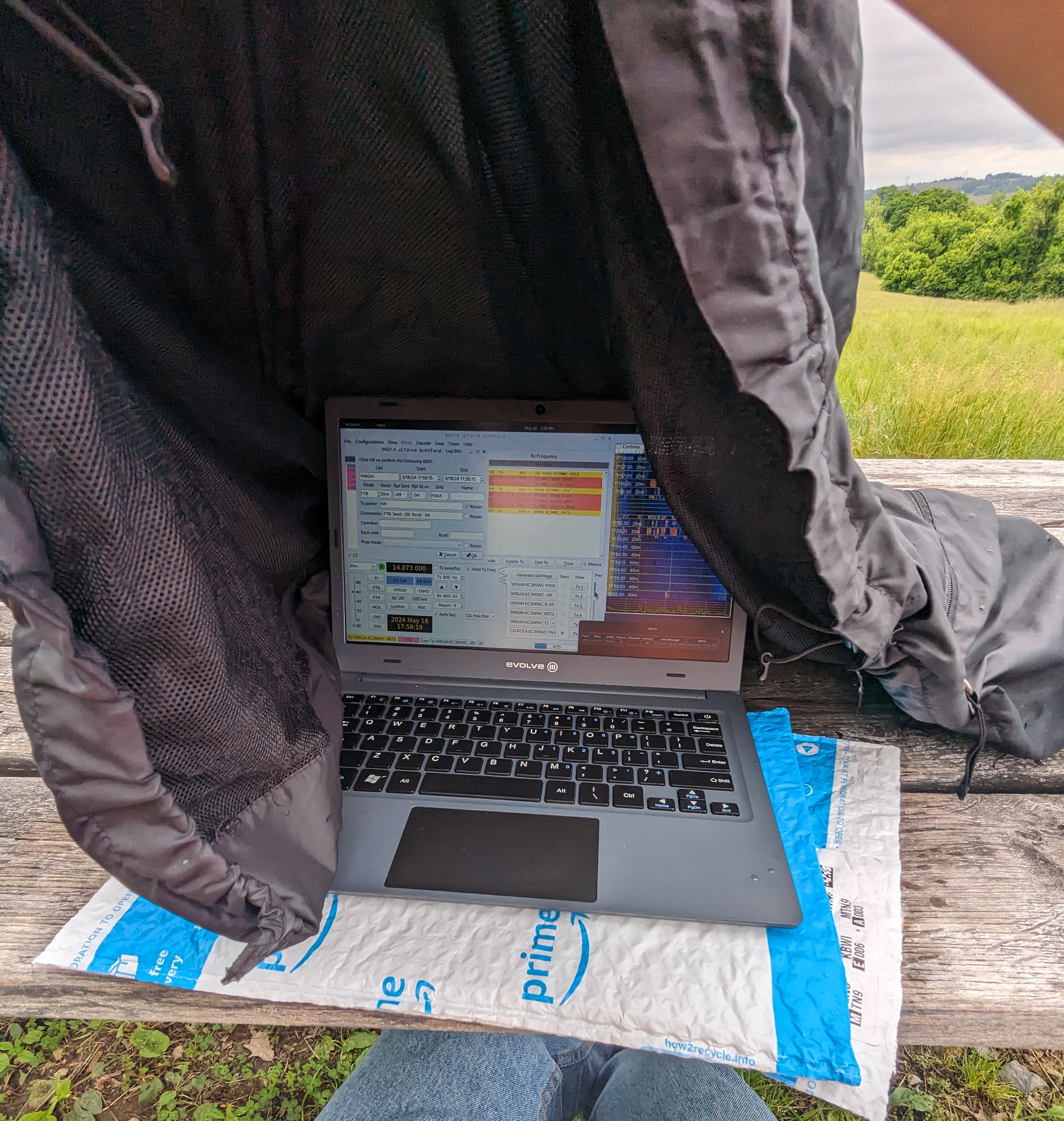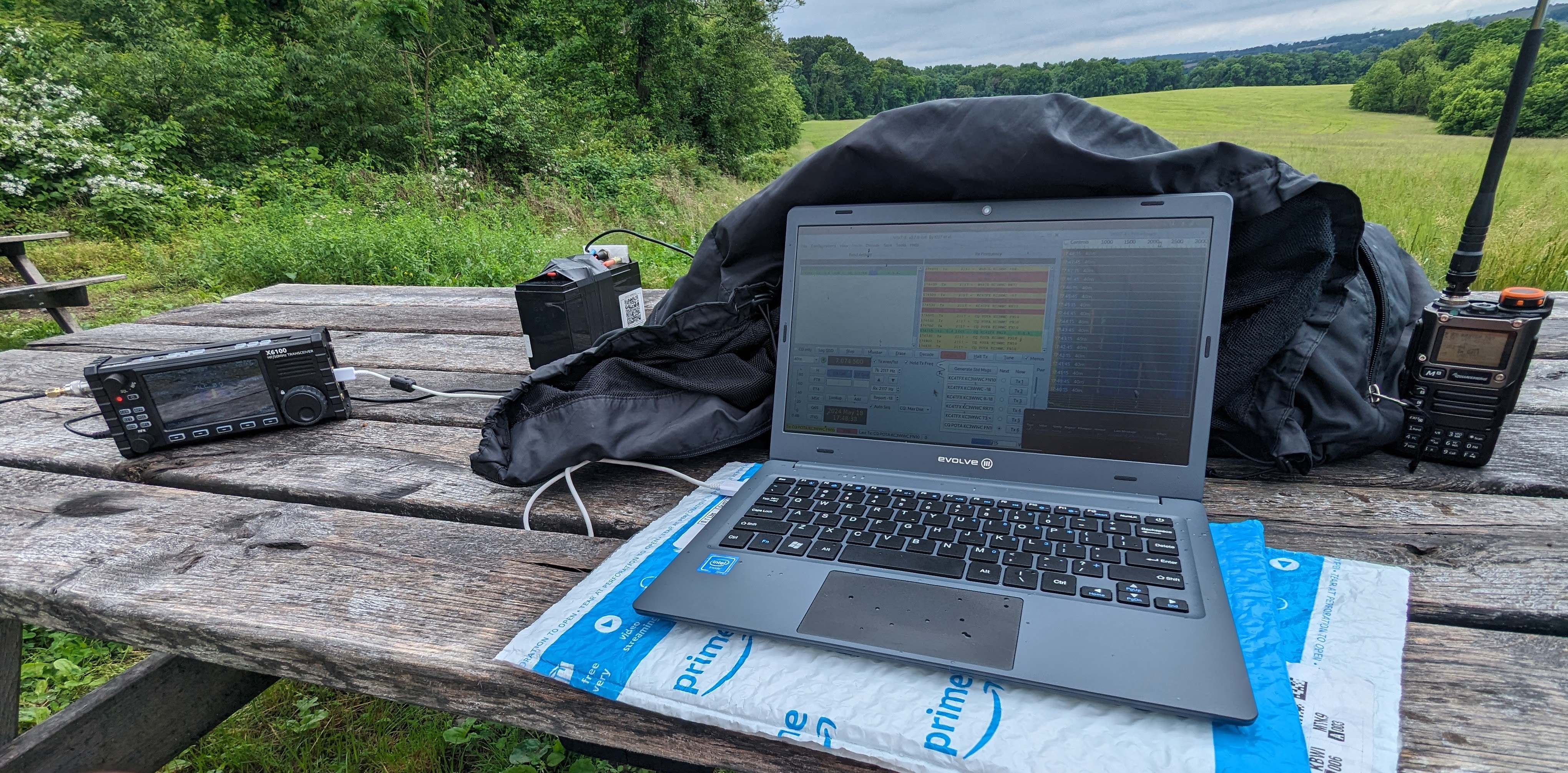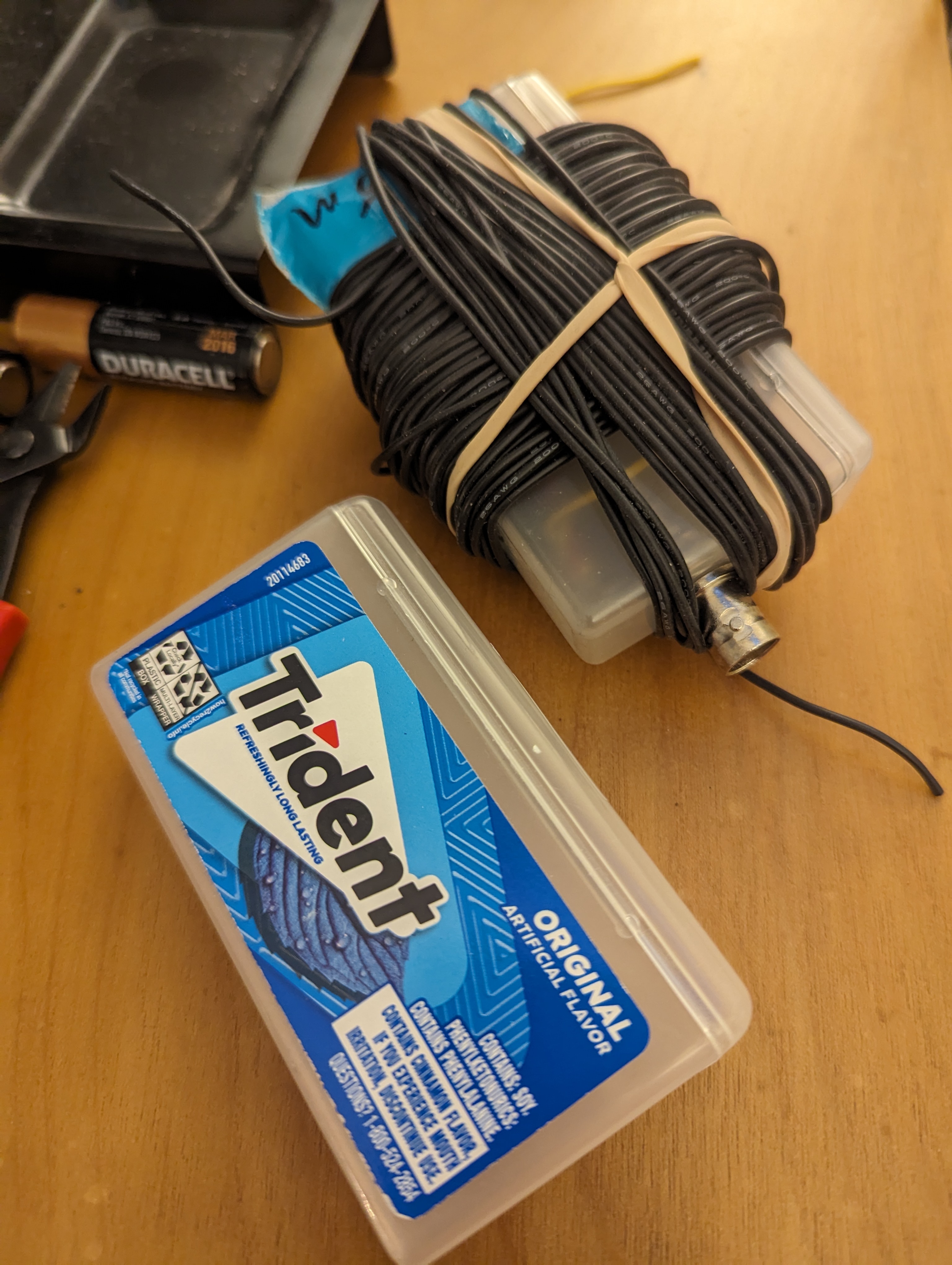Matt and I activated POTA US-1743, White Clay Creek, DE. I deployed the 20m-long EFHW into a tree, which worked nicely with no SWR. Matt deployed a telescoping dipole on a mast. I worked only 40m, and Matt ran 20m. We didn’t interfere with each other at all. I forgot my 5525 power splitter to run both the laptop and radio off 12V battery, but fortunately I didn’t need it for the computer.
POTA US-4356
After a bike ride in Harrisburg, I visited US-4356, Boyd Big Tree Preserve. I used the 20m EFHW sloped up into a tree near the main pavilion. I spoke to a park in Western PA, and a museum ship on Great Lakes in Toledo, OH. 15m FT4 was busy with lots of contesting, so I also ran some FT8 on 20m.
The go-box is over-stuffed again with extra rope. I need to slim it down again.
Camping, POTA, and Testing the EFHW
SPARC Elmer Night
I spent the Elmer Night tuning EFHW again with the NanoVNA. I proved that I saw the same graph when the antenna was stretched shallow vs a higher inverted-V.
I tried folding back the EFHW wire. It changed the tuning slower than cutting the wire. DX Engineering has a video about this. I didn’t get it finished at the meeting, since because it got dark.
Memorial Day Weekend POTA US-4361, Kings Gap Environmental Center
Matthew and I setup at Kings Gap Environmetal Center (US-4361) near the campground. I spent the most the time still slowly tuning my EFHW, and then dodging the rain. I barely made any contacts by the time I got the antenna in the air, and then the thunderstorms returned. We bailed, and I put the antenna up back at the campground strung over the site from tree to my fishing pole to telephone pole for the rest of the weekend. The twisted cords I’ve been using started unwinding, so it’s soon time to replace it with braided mason line.
POTA Antenna Test 3
I compared the 20m EFHW with the 12.5m EFRW at Sam Lewis (US-1418). I threw really high and made both antennas nearly vertical into high trees, not inverted-v.
EFHW could hear pretty well, and the SWR sweep showed again that I could shorten it, so I did lower it and take off a few cm.
The EFHW didn’t seem to like its counterpoise. With the counterpoise, it was giving me an SWR of 2-2.5:1 on 40m when I transmitted. If I removed the counterpoise or kept it coiled up, the SWR was lower. I still made most my contacts on 40m.
I think the radio may have again been interfering with the mouse when transmitting. I already had chokes on both ends of the feed line, but adding the counterpoise helped that common mode interference. It was a rough day.
The EFRW would not tune well at all on 40m with or without its single counterpoise. That surprised me greatly, because I had tested that same unun with my existing EFRW antenna out the front window at home.
I wonder if it had something to do with each antenna being mostly vertical. I wonder if they needed more radials instead of a single counterpoise. K4OGO (Walt of Coastal Waves and Wires) always adds so many radials to his verticals.
This had me questioning everything. I thought I was doing something really good by getting the wires high and vertical. When I brought the radio home and connected to the same old EFRW, it was again performing normally.
I also learned that the POTA website cuts off your activation and starts a new one at 00:00UTC, 8pm, so I ended up with 2 QSOs counting toward a second (incomplete) activation at the park.
EFHW Test 2
I ran out to Susquehanna Riverlands State Park (US-9719) to test the EFHW again. This time I tied it to a bush and a picnic table and raised the center with the fishing pole mast.
I took the time to sweep all the bands with the X6100’s built-in analyzer app. 40m looked like it could stand to have the wire slightly shorter, but when I transmitted, the SWR looked fine. I saw about 1.5:1 SWR on 40, 20, and 15. 10 was a little off, so I guess I’ll add the 100pf capacitor that most people use.
The tuner made 12m and 17m work, so I made FT8 contacts on 40m, 20m, 15m, and 17m.
I was also trying out some of the combo winder/unun I 3d printed and made some notes. I’ll post my remix soon of another person’s OpenSCAD code. I like the all-in-one designs that wrap up into one package, but I wonder how much that will hinder my random experimentation with antennas.
While transmitting, I noticed the Evolve 3 laptop’s mouse would stop responding. I had seen this on other laptops using the 1/4 wave HF vertical. I added the common mode choke to the feed line near the radio, and that cleared up. There was already a choke near the antenna, but I guess it wasn’t enough. I love when I can see a clear cause and effect or problem and solution.
EFHW Test
Ben and I took the radio gear for a walk to Hawk Point overlooking the river in Susquehannock State Park (US-1425) for a POTA activation. We threw the 20m EFHW into the trees in an inverted-V. I checked the SWR on 15M, and it came in about 1.5:1 or so.
I could hear really well with it, and I contacted Argentina, Texas, California, and Italy among other closer places on 15M FT8. I spun the dial down to 20M SSB to hear a park in Illinois, but it was busy and the sun was setting quick, so I didn’t wait to try to make contact.
I’ll have to try the other bands next, but my randomly starting up on 15M worked great.
Using the little box as a winder for the wire didn’t work out so well. It became an immediate tangle as I tried to unwind it. I’ll switch to a 3d-printed winder instead.
New Wires
The bands were dead with the terrible geomagnetic storm this weekend, so HF is very limited. I was only able to contact Lititz from Mountville.
With the downtime, I built some new EFHW antennas. I tied some wires to trees, stretched them out, and tuned each of the 2 20m EFHW antennas with the NanoVNA: one speaker wire, and the other lightweight silicone wire. I built new ununs and mounted them in plastic gum cases and a 3D-printed winder.
I also cut a lightweight EFRW, 12.5m, from the silicone wire and gave it a gum case as a winder.
I’ll test the new antennas soon when the bands are better.
